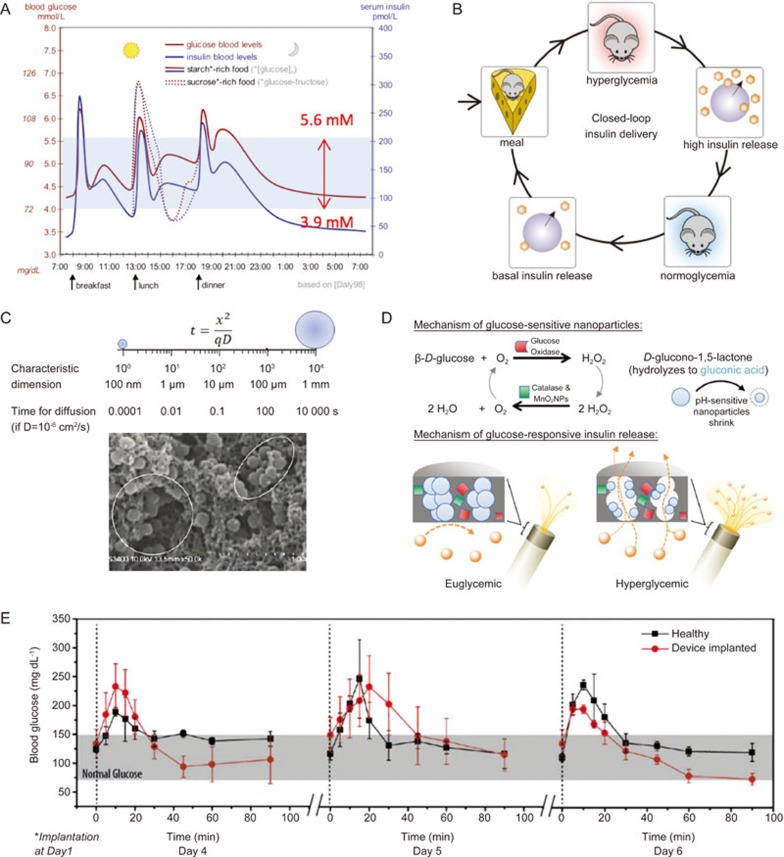Figure 7.
(A) Profile of blood glucose and insulin concentration with high-starch and high-sucrose diets. (B) Schematic illustrating the concept of closed-loop insulin delivery for the management of blood glucose levels in Type 1 diabetes patients. (C) Comparison of the time for a molecule with assumed D=1×10-6 cm2/s to diffuse a distance within a material with milliliter to nanometer sizes (top) and a scanning electron microscopic image of nanohydrogel particles in a composite membrane (bottom). (D) Schematic of a chemically-driven closed-loop insulin delivery device based on glucose oxidase, pH-responsive nanogel, catalase and MnO2 NPs. Glucose oxidase catalyzes the oxidation of environmental glucose to gluconic acid, which induces shrinkage of embedded pH-sensitive nanogels, leading to increased membrane porosity and faster diffusive release of insulin from the device. Catalase and MnO2 nanoparticles remove by-product H2O2 and regenerate O2, which is required for glucose oxidation. (E) Blood glucose levels of healthy (square) and diabetic rats implanted with the closed-loop insulin delivery device (circle) over a 90 min period following a bolus injection of glucose. Error bars represent SD (n=3). The implanted devices enabled blood glucose levels to return to a normal range within ∼30 min after glucose injection, thus mimicking the physiological insulin response of healthy rats. The figures are reproduced from Daly et al160, Gordijo et al172, Li et al169 and Chu et al171 with permission.

